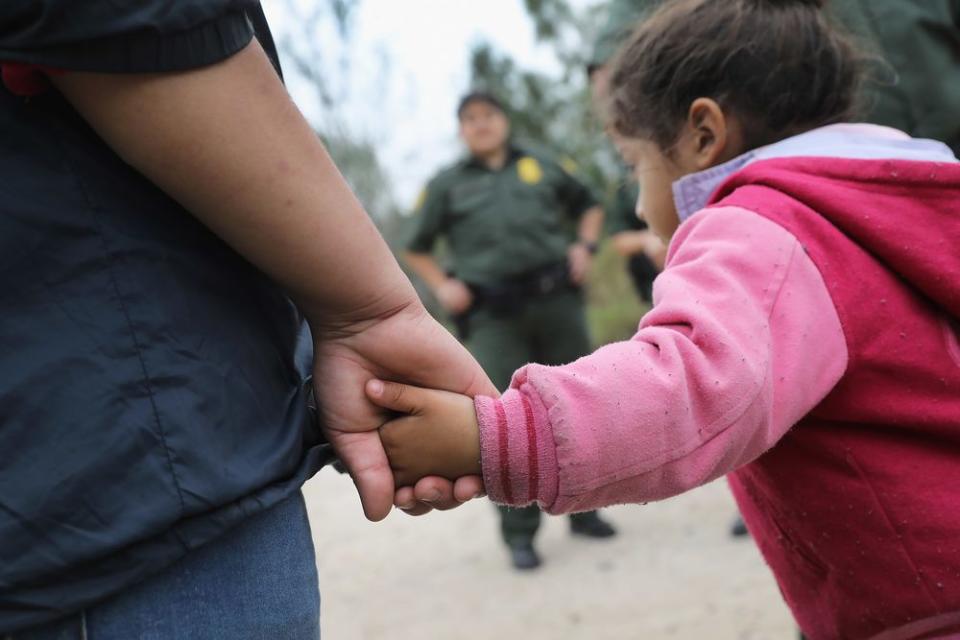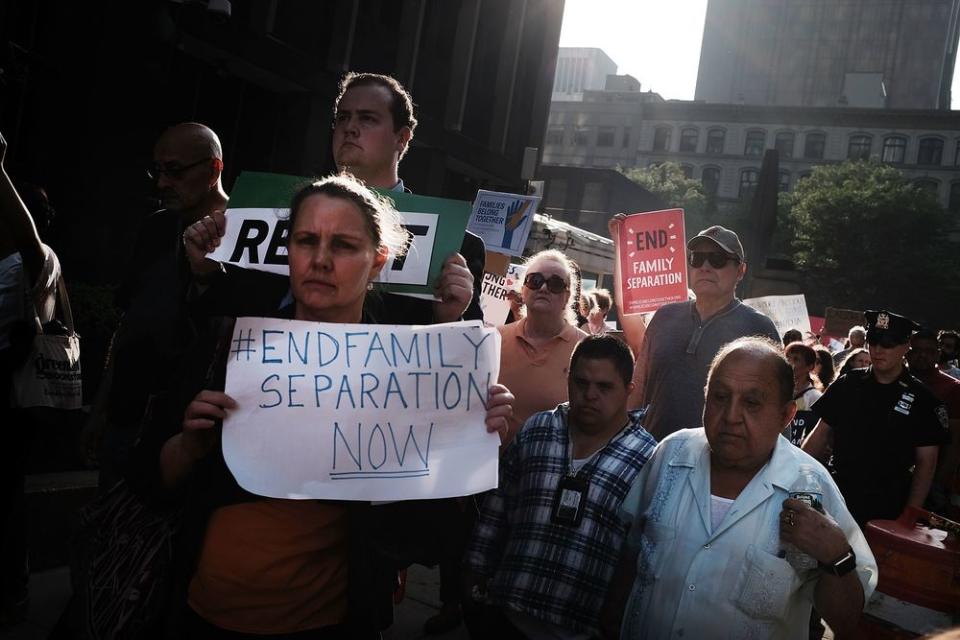Inside The 'Tender Age' Shelters For Babies and Toddlers Separated from Their Parents at the US-Mexico Border
“Where are the babies?” It’s a question reverberated ever more plaintively this past week as images of young boys in converted box stores or tent cities flooded social media and news coverage of the Trump administration’s policy of separating migrant children from their parents illegally crossing the border.
The Associated Press uncovered the answer late Tuesday: that babies and other young children removed from their parents at the U.S.-Mexico border are being sent to so-called “tender age” facilities in Texas.
Colleen Kraft, MD, president of the American Academy of Pediatrics, tells PEOPLE that this kind of forced separation constitutes nothing less than “child abuse.”
She recently visited one of these “tender age” shelters near the Texas-Mexico border and run by Southwest Key Programs in conjunction with the U.S. Health and Human Services’ Office of Refugee Resettlement.
RELATED: Zero Humanity’: What to Know About the ‘Cruel’ Migrant Crisis Separating Kids from Their Parents
Most striking to Kraft was the toddler playroom. “Children in there were quiet. Some were playing with toys. Some were just looking at us. One little girl in the center of the room was just sobbing and wailing and beating her little fists on a playmat.”

Lawyers and other medical-care providers tell The Associated Press that other shelters had “play rooms of crying preschool-age children in crisis.”
Tuesday night during her live broadcast, MSNBC’s Rachel Maddow was so overcome with emotion that she couldn’t speak while trying to tell viewers about the AP’s breaking news on the existence of “tender age” shelters.
Here’s what we’ve learned about them so far:
How many of these centers are there?
There are at least three in South Texas, with the government planning to open a fourth in Houston, according to the Associated Press.
How old are the children in them?
Kraft tells PEOPLE that at the center she visited in Combes, the children were under 12, a mix of boys and girls. The youngest children she saw were the babies of a couple of teenage mothers; of those forcibly separated from their parents, the youngest kids were in the range of 1 to 3 years old.
An official with the Department of Health and Human Services told the Associated Press that these “tender age” facilities hold children under age 13 as well as children with special needs.
Is it really true that staff members are banned from picking up kids and comforting them when they are crying?
Yes. Staff members told Kraft they are not allowed to pick up or hold the children. “They are not allowed to comfort them,” she says. “This was a starkly abnormal situation. Those of us in the room knew that none of us could give these kids what they really needed, and that was their parents.”

How many children do the shelters house?
The shelter that Kraft visited held about 60 children. Democratic Texas Rep. Filemon Vela Jr. told CNN that when he toured the Brownsville “tender age” shelter, there were about 80 children, and 40 of them had been separated from their parents.
RELATED: PEOPLE’s Editor-in-Chief Says Loving America Means Hating What’s Happening to Children at the Border
What do the centers look like?
The shelter Kraft visited was “very homey,” with a toddler room containing cribs, books and toys.
Other physicians and lawyers who have visited the shelters describe similar scenes that Kraft witnessed—of clean, toy-filled facilities filled with traumatized, crying children.
“The shelters aren’t the problem. It’s taking kids from their parents that’s the problem,” Texas pediatrician Marsha Griffin, who visited multiple shelters, tells the AP.
“What’s most important is that you can have the nicest physical facility for a child,” says Kraft, “but if you disrupt that foundational relationship with that parent, if you separate a child from that parent, you are still doing harm.”

